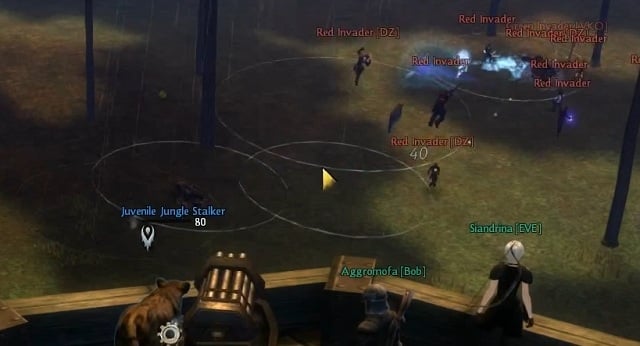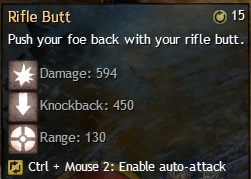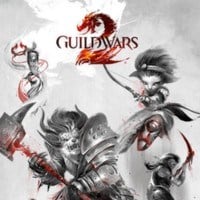Guild Wars 2: Control
It's second most important, next to the damage, mechanics used in Guild Wars 2. Control of an encounter lies in manipulating over enemy's damage and temporarily eliminating him from the combat. Such effects are applied by the skills, but the more powerful effect, the less often you can use the skill.

Area fire is also a control method.
Control methods can be divided on few types. First and most common one is a movement control. here you can find effects like cripple or immobilize which slow enemy down or completely stop him, but don't affect his attack; sink and float change his position in underwater combat, wards blocks the passages and, indirectly, the area skills: casting lot of area damage spells or using siege engines may force enemy to leave the particular place.
The second type is enemy's damage control. Blind, chilled, weakness, daze decrease effectiveness or frequency of opponent's attacks. Confusion and retaliation forced him to think: is it worth to lose my HP to damage enemy? What is more, skills like for example shield of absorption can block or reflect attacks.
More powerful skills can control both enemy's movement and damage. Those are: fear, forcing enemy to run away, push, launch and pull, interrupting the skills and moving the enemy and also knockdown and stun which daze him (what can be leveled by the break from stun skills).

Another type of affecting the combat method is enemy's healing control/active defense control. Poison not only damage enemy, but also decreases the effectiveness of healing spells casted on him when the weakness slows down regeneration of endurance.
There exist also an aggro control, used in the PvE. It is focusing enemies' attention on one player, what let the rest of the team fight freely. Due to the lack of strong healing spells in Guild Wars 2, heroes using this tactic should replace often.
You are not permitted to copy any image, text or info from this page. This site is not associated with and/or endorsed by the developers and the publishers. All logos and images are copyrighted by their respective owners.
Copyright © 2000 - 2025 Webedia Polska SA for gamepressure.com, unofficial game guides, walkthroughs, secrets, game tips, maps & strategies for top games.
